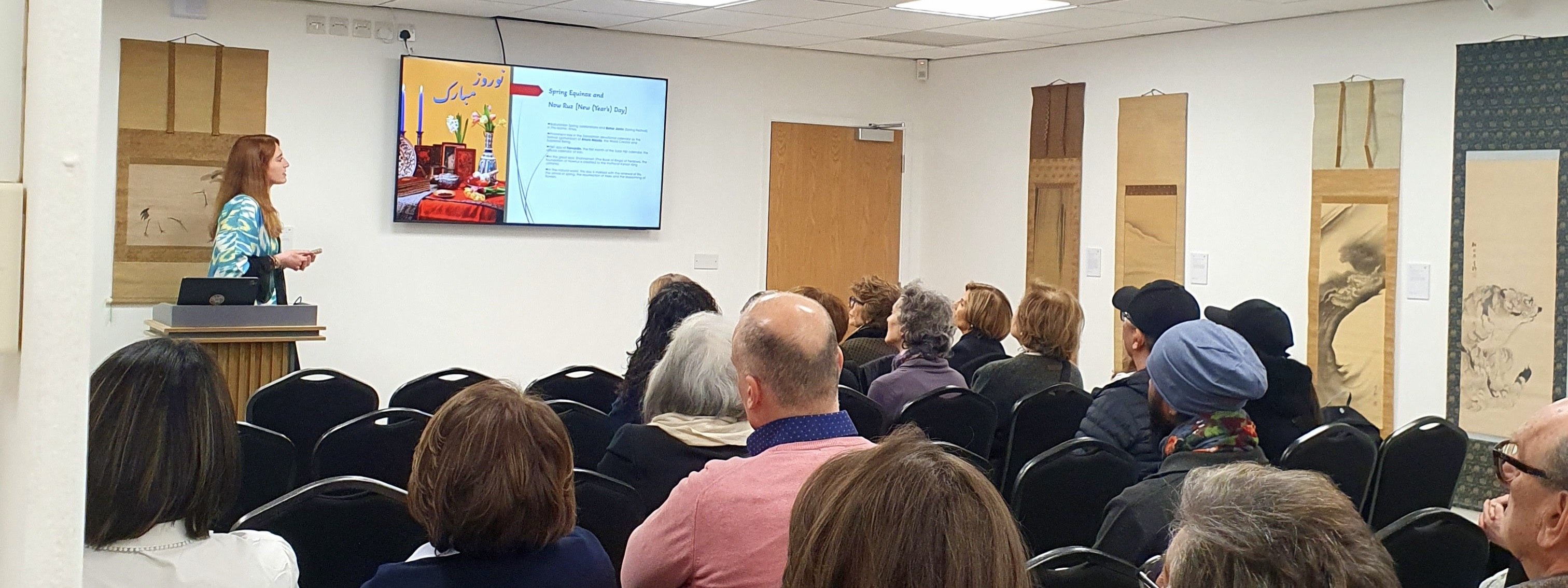

25/03/2025 General News, Latest News
Nowruz, the Persian celebration for the New Year, took place this year on March 20th, coinciding with the Spring Equinox. In anticipation of this, on Sunday 16th March we hosted an event in collaboration with Maryam Khosrowshahi, co-author of the publication SOFREH: The Art of Persian Celebration. The event was hosted in Azca’s London premises at 188R Hammersmith Road. It involved informative talks on the history and significance of Sofreh by Maryam Khosrowshahi, who had curated a beautiful Sofreh display for guests to enjoy, as well as Azca’s own Head of Islamic and Indian Art, Beatrice Campi.
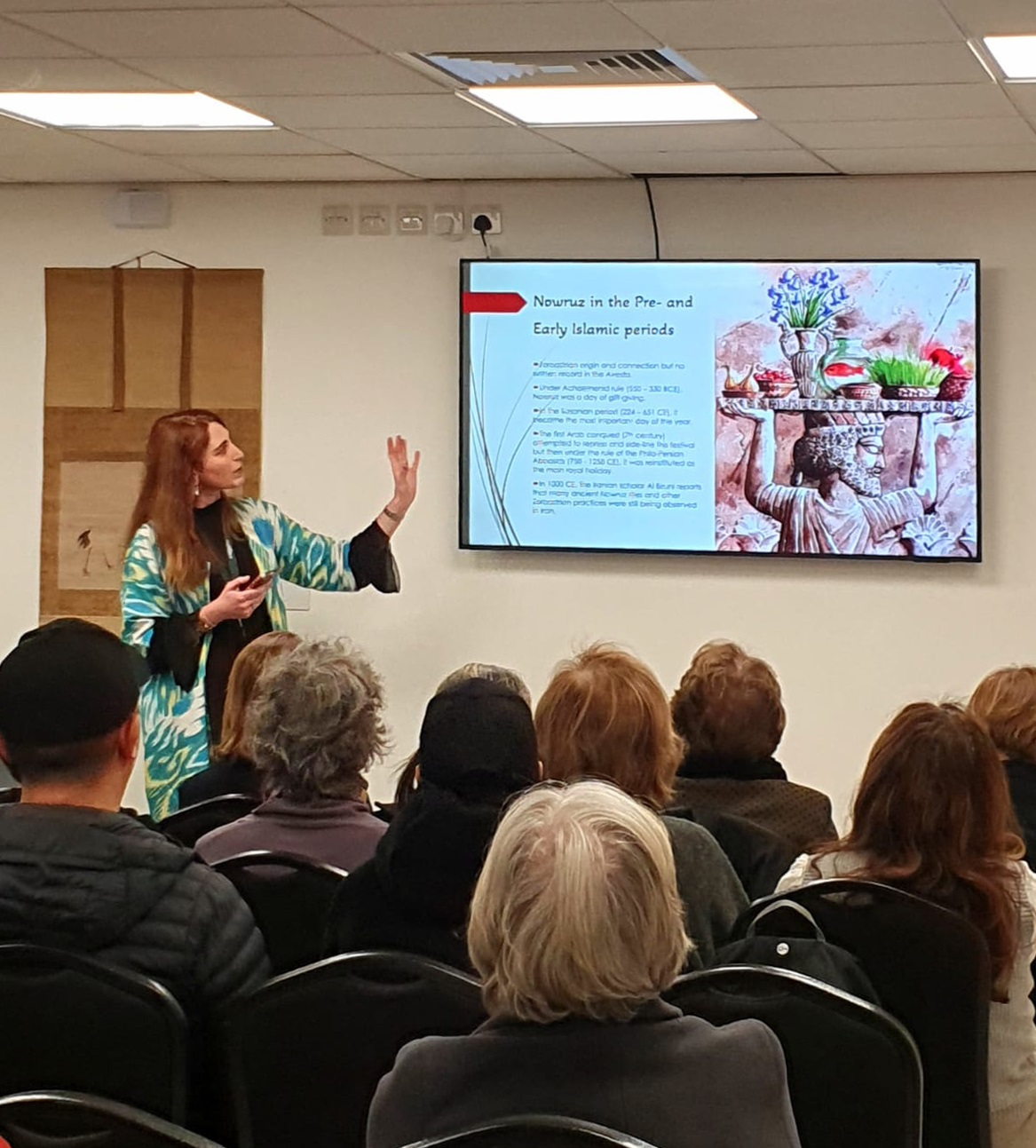
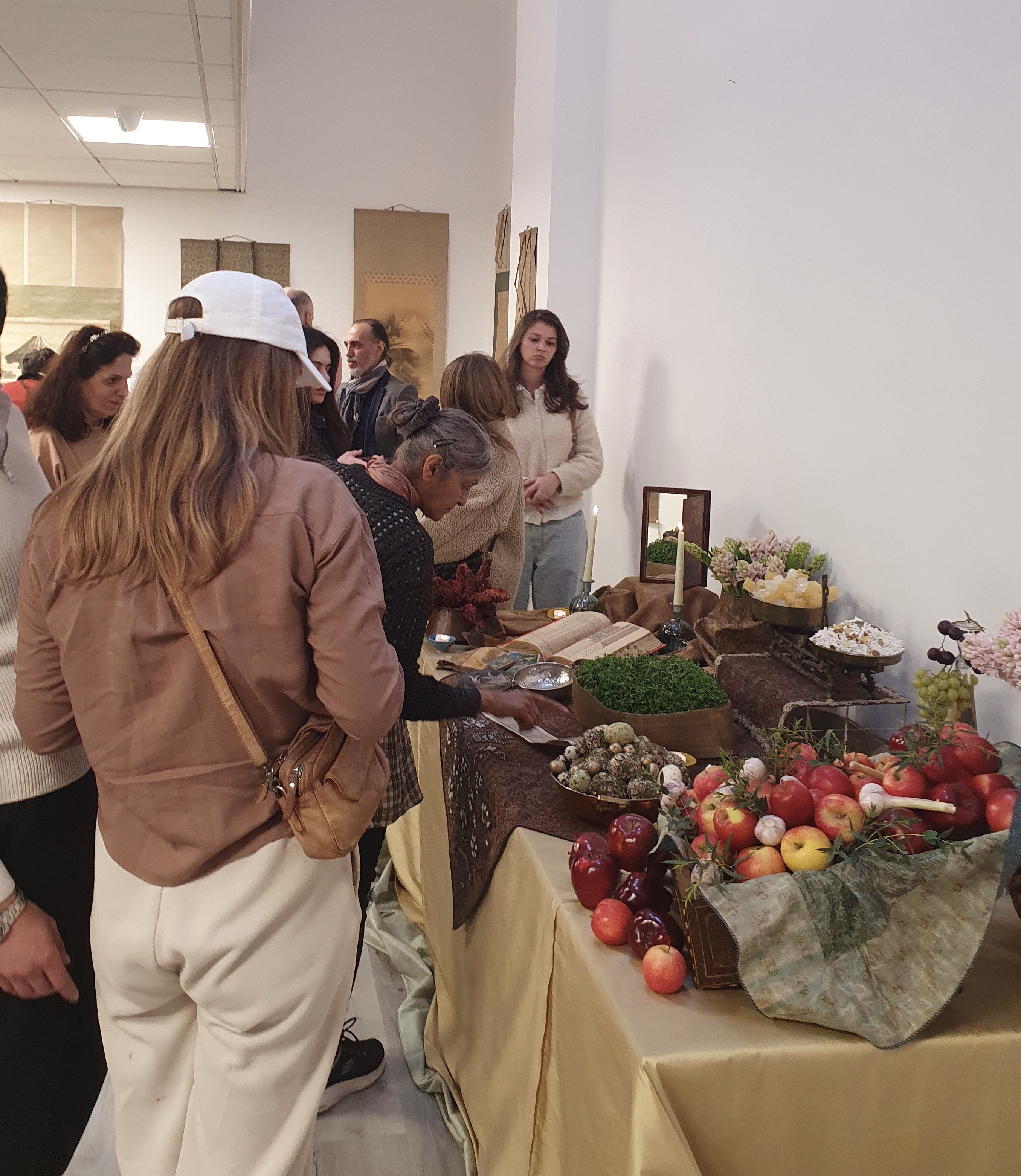
(Attendees enjoyed the Sofreh created by Maryam Khosrowshahi, as well as two accompanying informative talks)
Sofreh, which means ‘spread’ in Persian, is a kind of table display connected to Persian celebrations and ceremonies. This spread typically includes floral arrangements, various condiments and foodstuffs, and objects all with symbolic importance derived from cultural and/or spiritual associations. These displays are found primarily at weddings (Aqd) and the Persian New Year (Nowruz), the latter being celebrated annually on the first day of spring. This is the kind of Sofreh which Maryam Khosrowshahi created specificallly for guests at the event (making it unique), and it constituted an abundant display of artfully arranged components, all rich with symbolic significance - including lots from the upcoming Ethnographica auction (which will take place on April 9th, click here to view the sale catalogue)
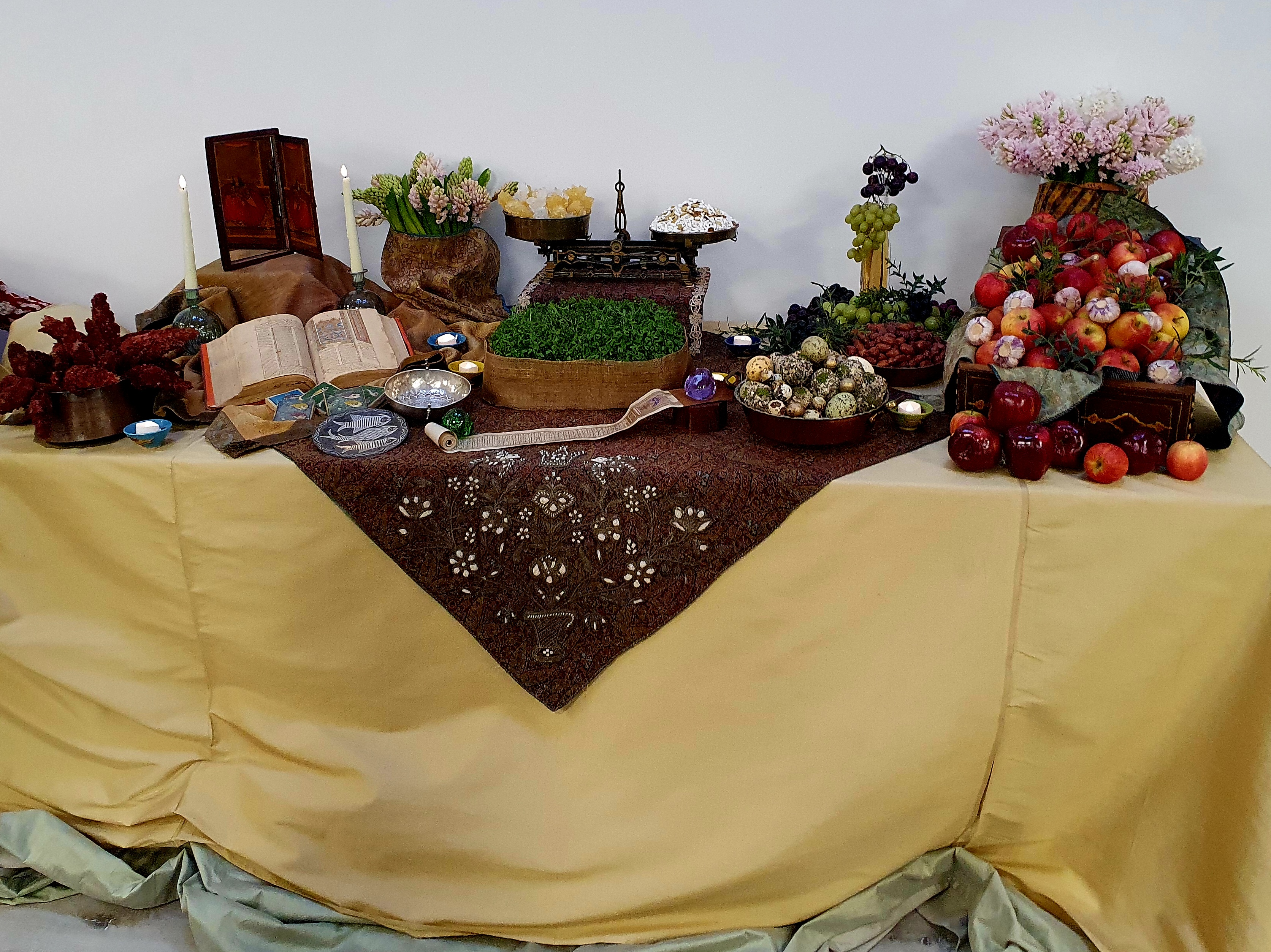
(The Sofreh was designed by Maryam Khosrowshahi specifically for the event, including lots from our upcoming April 9th auction)
Once guests had enjoyed a taste of Iranian sweets that can typically be found at Nowruz celebrations, Beatrice began the afternoon’s lectures with an introduction to the festival. Its history was traced to Zoroastrian origins, and the first records of its celebration (as a day of gift-giving) date back to the Achaemenid rule (550-330 BCE). Although in the 7th Century CE the first Arab conquest saw an attempt to suppress the festival, under the rule of the Philo-Persian Abbasids (750 – 1258 CE) it was revived once again, with a prominence enduring until the Safavid period- by which point it was a fully institutionalised holiday. This meant that Nowruz represented the beginning of the fiscal year, and saw new appointments to political offices, along with maintaining related celebratory practices such as creating floor spreads and displaying coloured eggs.
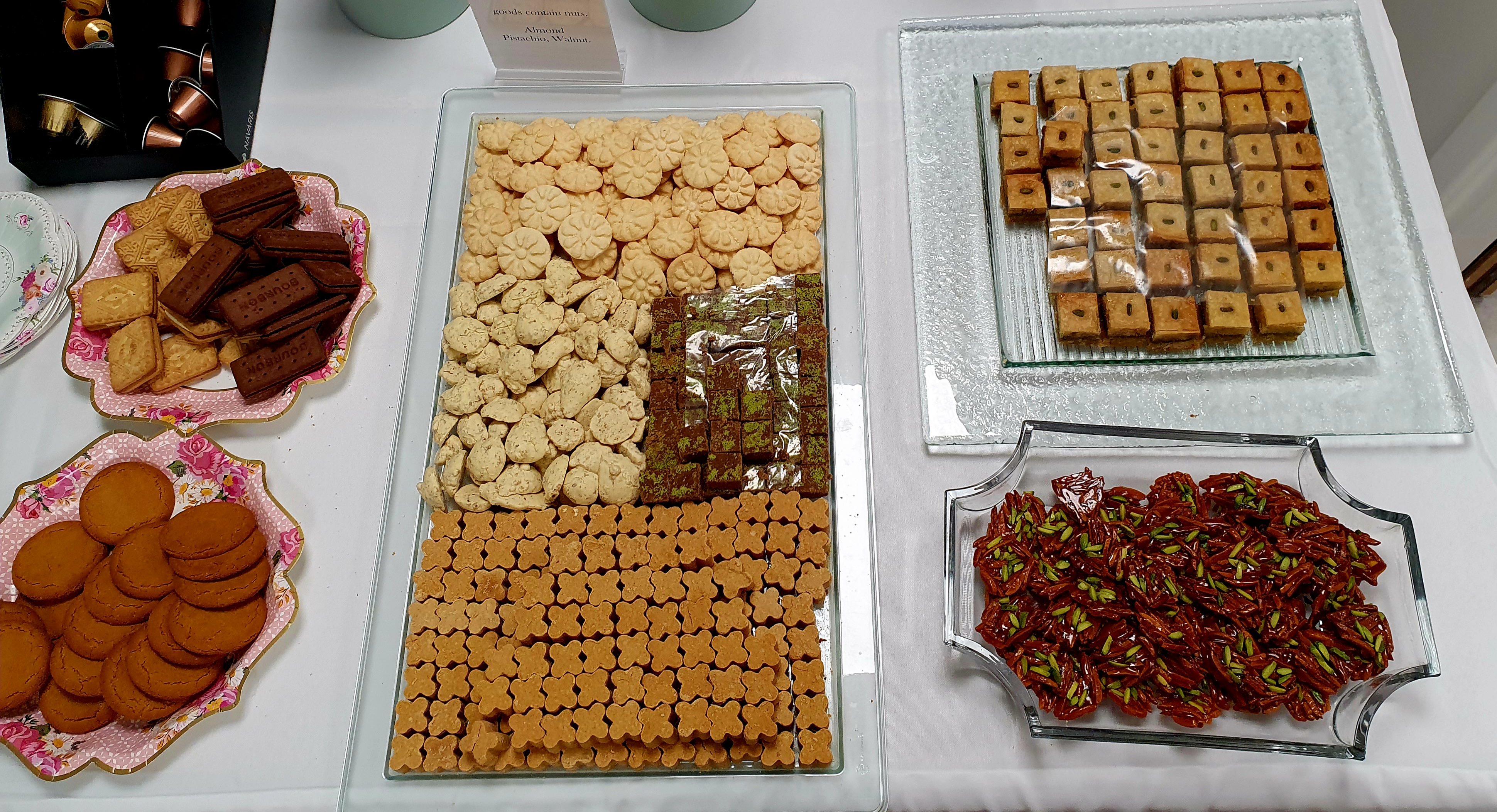
(Guests enjoyed a taste of Iranian sweets that can typically be found at Nowruz celebrations, alongside some more conventional British offerings...)
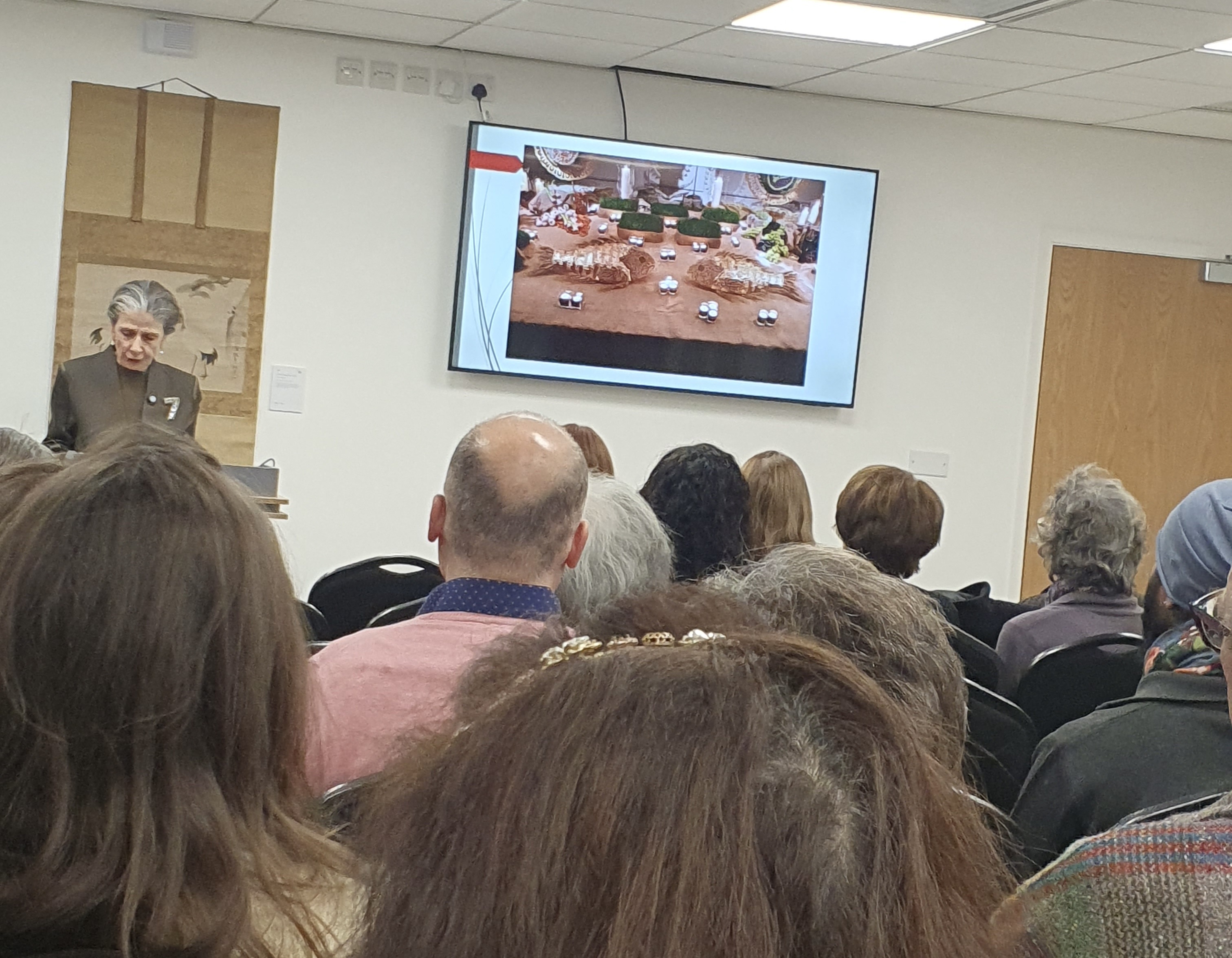
(The lectures covered the history of Nowruz and the traditional components found in Sofreh)
Maryam’s lecture followed this historical introduction, and went deeper into the significance of each element which she included in the event’s own Sofreh. She explained the prominence of fresh fruit and vegetables being featured, with clear connections to the expectation of bounty in springtime. The most important of these vegetal symbols however is the Sabzeh, or sprouting grains, which took the central position in Maryam’s Sofreh. The particular growing component featured can vary, from wheat to mung bean sprouts to lentils.
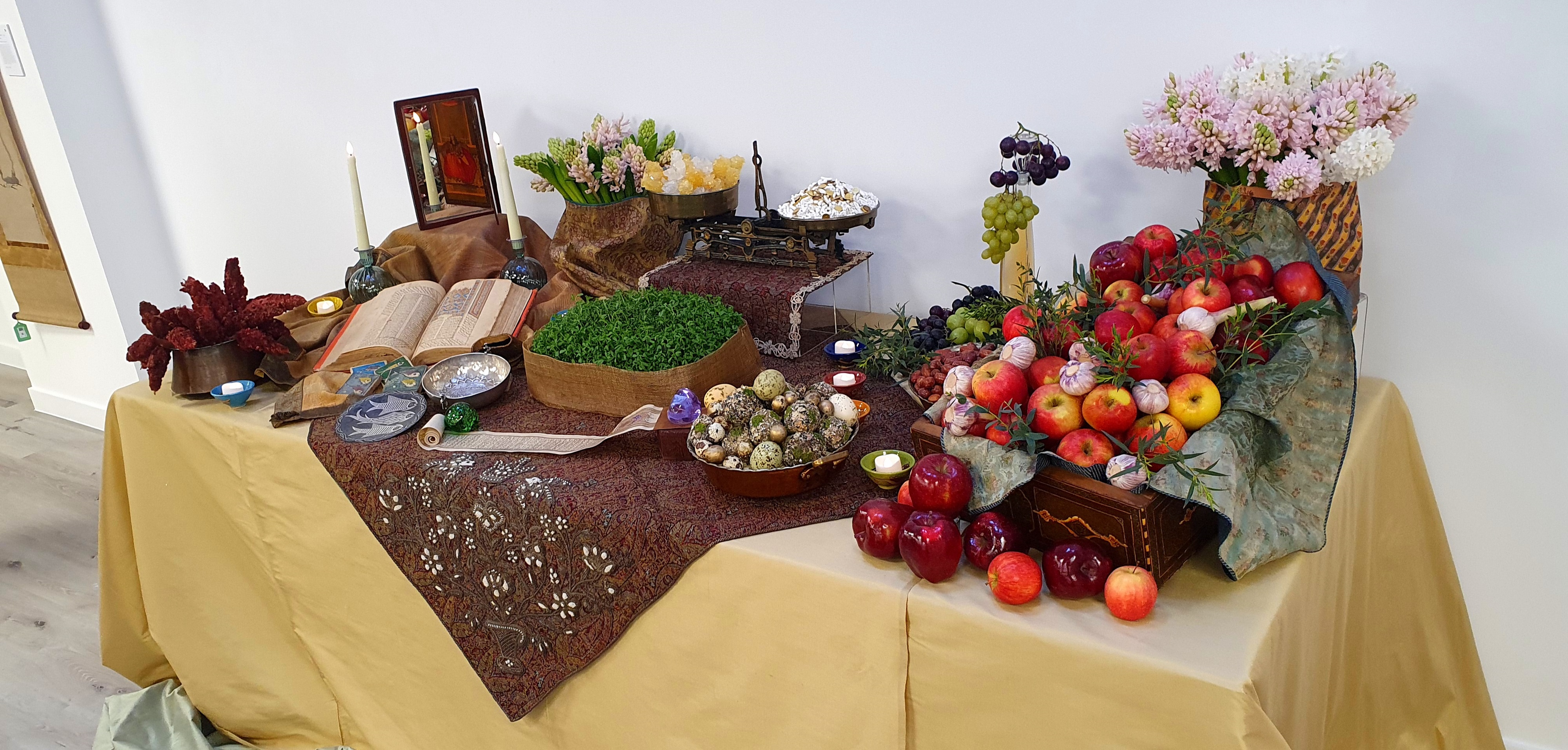
(The basket of sprouting grains was placed central to the display)
These grains represent one part of Haft-sinn, which is a guiding principle to Nowruz Sofreh. The term Haft-sinn relates to seven symbolic objects, ‘Haft’ meaning ‘seven’, which crucially all begin with the character ‘س’, or ‘sinn’, which all commonly feature in Sofreh for this celebration. Primarily, these seven objects are: Sabzeh or sprouting grain/pulses (سبزه), Samanu – a sweet pudding made from wheat germ (سمنو), Senjed/oleaster – a kind of shrub similar to an olive tree (سنجد), Serkeh/vinegar (سرکه), Seeb/apple (سیب), Seer/garlic (سیر) and Somagh/sumac (سماق). Others may replace or accompany these seven: coins and hyacinth are two common inclusions, which also can count as Haft-sinn, that Maryam integrated.
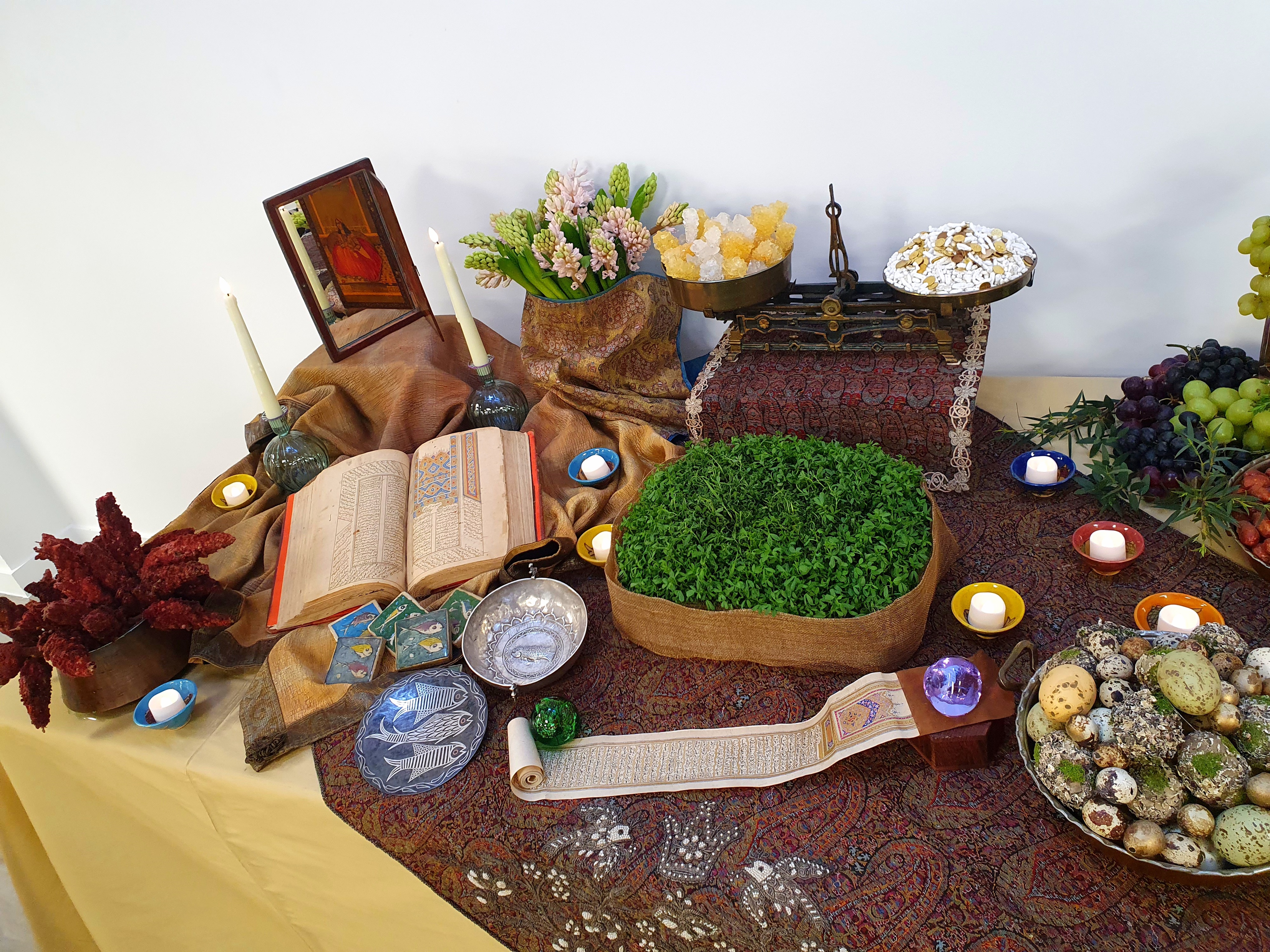
(Somagh/sumac (سماق), coins, weighing scales, hyacinth blossoms and painted eggs were all amongst the symbolic offerings placed on this Sofreh)
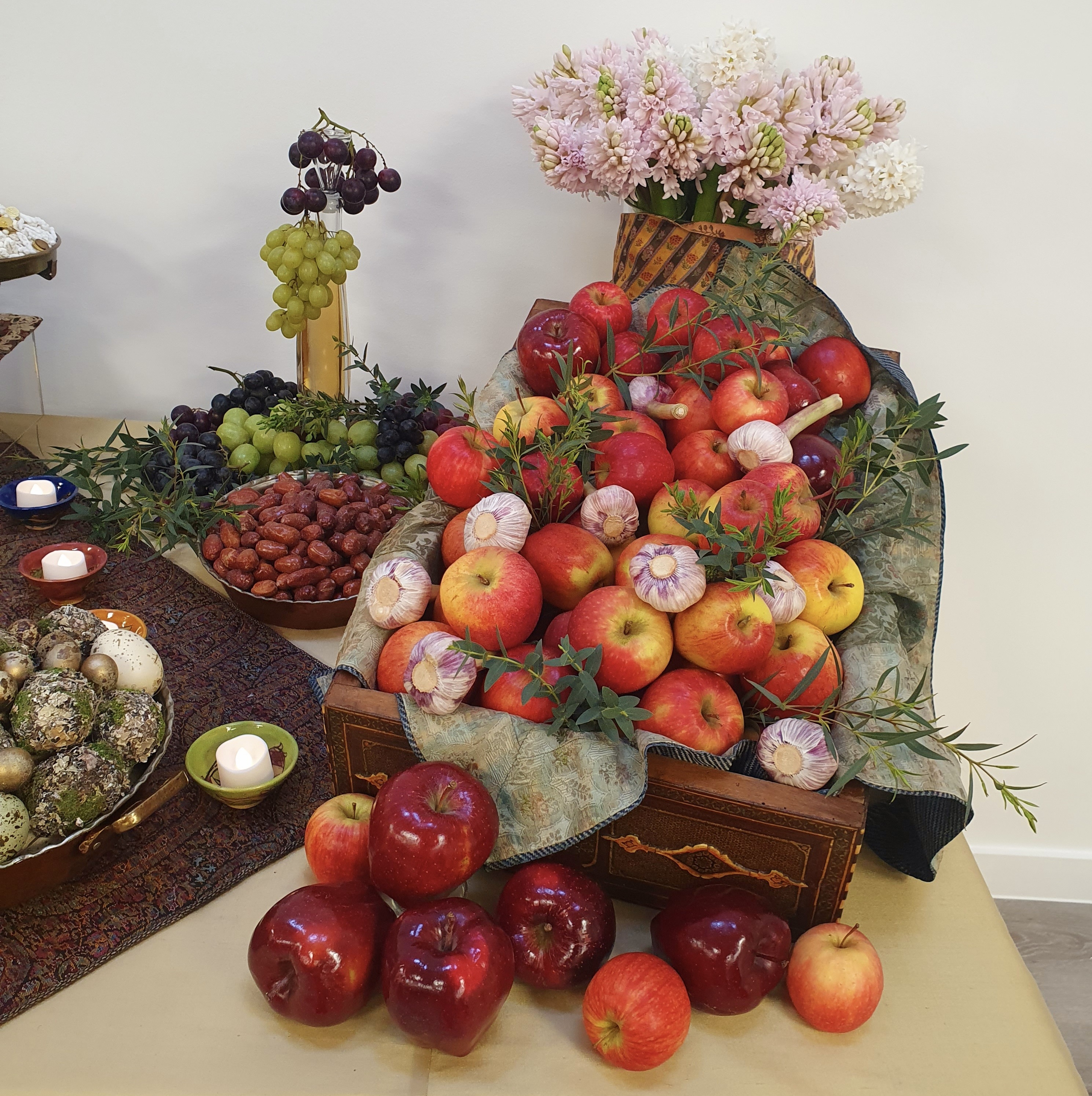
(Seeb/apple (سیب) and Seer/garlic (سیر), two elements of Haft Sinn)
Recognising this practice as a fundamentally artistic one, which she views as comparable to the tradition of European still-life painting, was another key message behind Maryam’s talk.

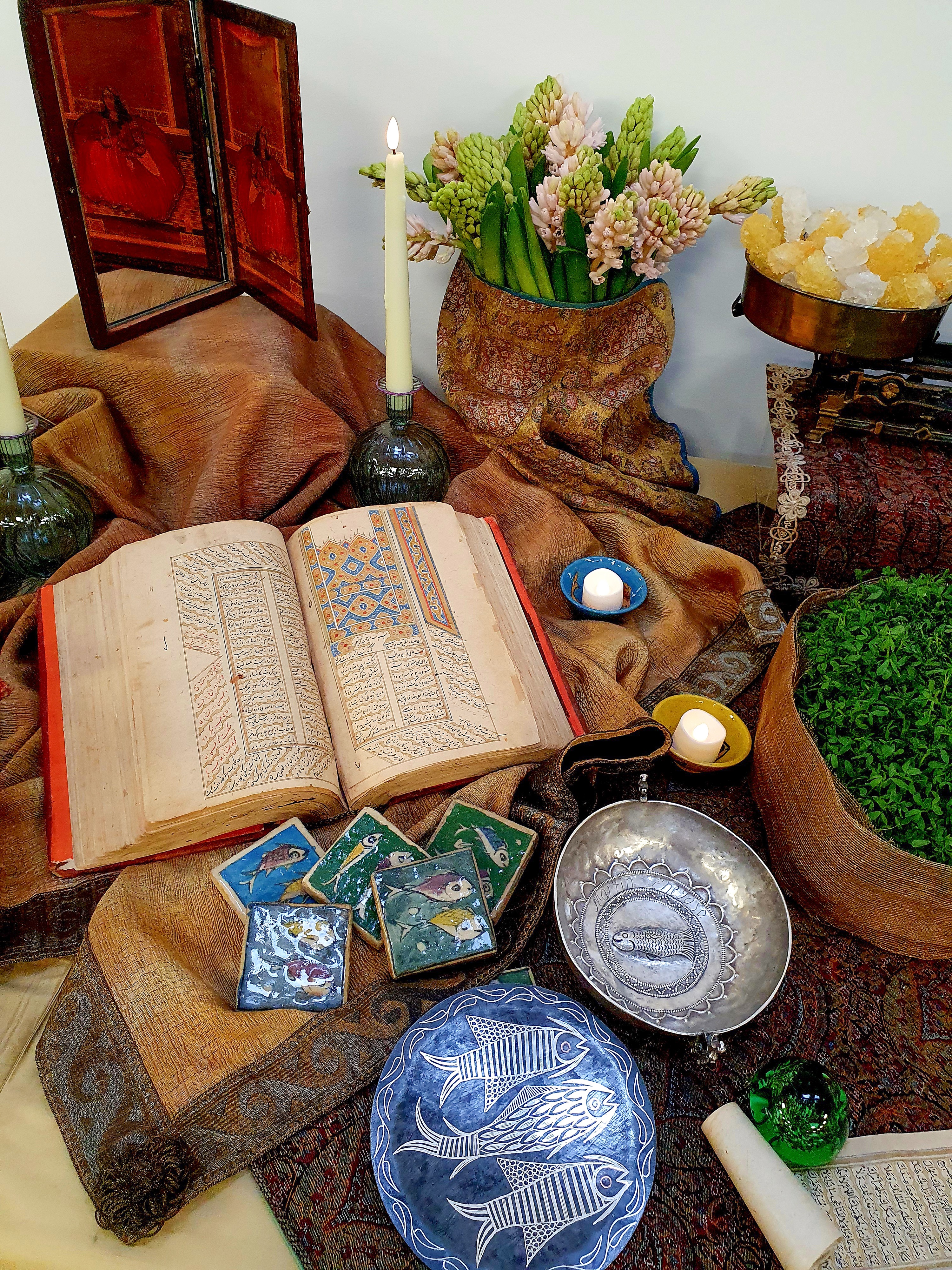
(Willem Kalf (1619-1693), Still Life with Ewer, Vessels and Pomegranate, oil on canvas, The J. Paul Getty Museum, and a detail from Maryam's Sofreh)
This was important to highlight, as indeed the nature of Sofreh as commonly limited to private domestic settings (in the context of Nowruz celebrations) has meant that its artistic significance has not always been openly recognised. Hopefully publications like Maryam’s co-authored SOFREH: The Art of Persian Celebration will be able to continue encouraging greater aesthetic and cultural appreciation towards this ancient tradition.
We greatly enjoyed hosting this afternoon of cultural insight and appreciation, and look forward to bringing similar events to audiences in future. Those interested who were unable to attend the event may find a recording of the lectures in full on Azca’s YouTube channel.
For enquiries regarding consignments, or any general queries, reach out to Head of Islamic and Indian Art, Beatrice Campi, at Beatrice@azcaauctions.com
Arts of the Islamic and Indian Lands | Azca